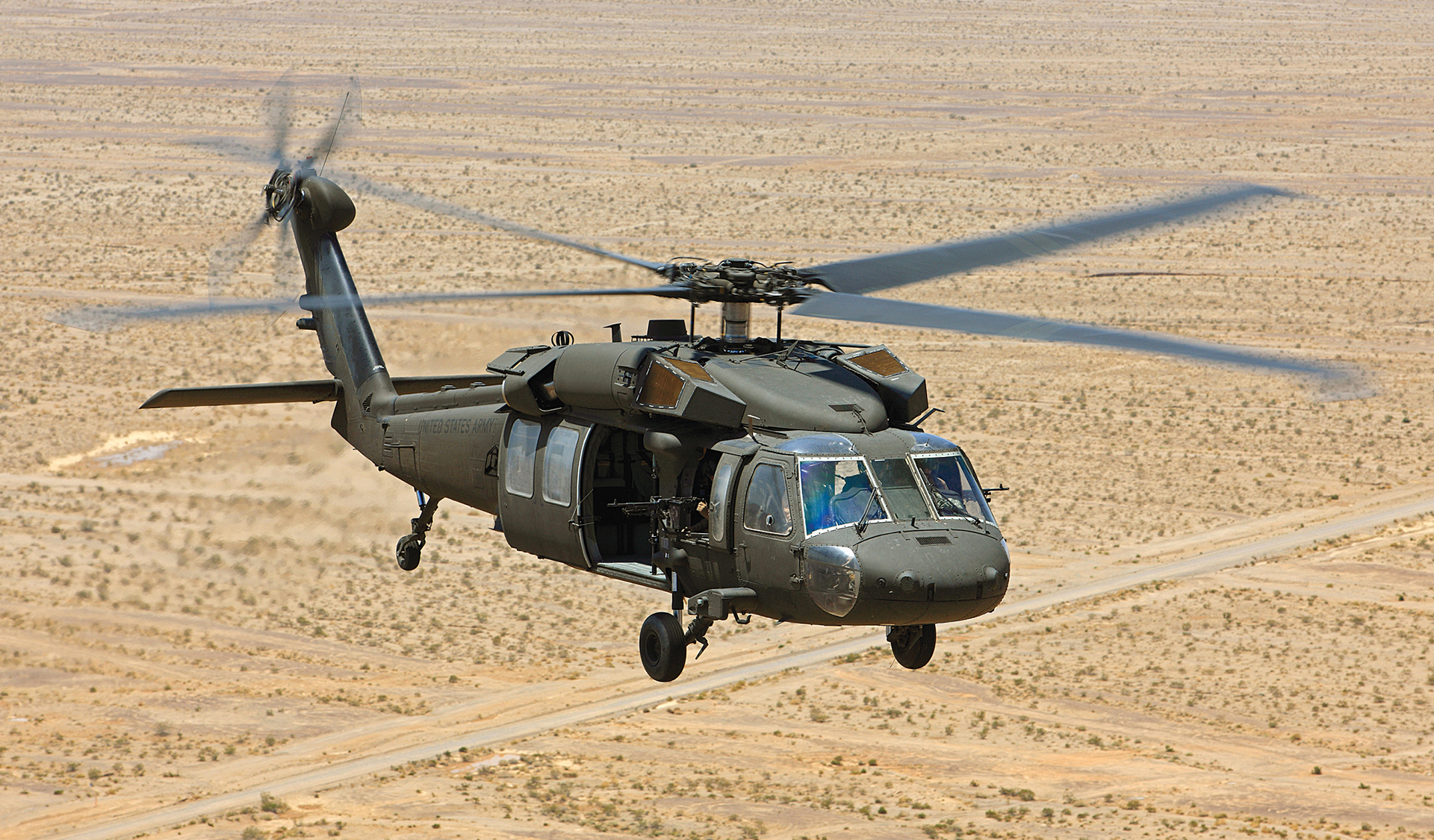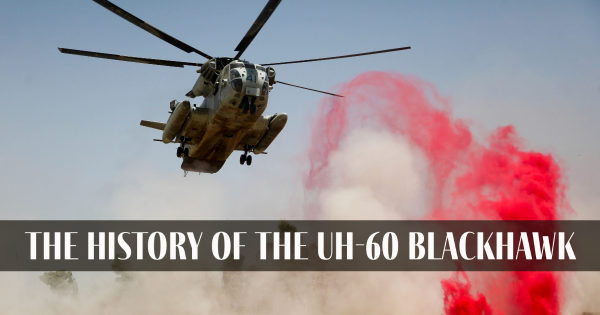Flight Ready: Ensuring Optimal Condition for Your UH 60 Helicopter
Flight Ready: Ensuring Optimal Condition for Your UH 60 Helicopter
Blog Article
Comprehending the Mechanics and Design Behind Uh 60 Helicopters
The UH-60 helicopter, typically understood as the Black Hawk, stands as a peak of contemporary rotorcraft innovation, personifying a mix of durable design and elaborate auto mechanics. As we peel back the layers of the UH-60's style, a world of elaborate systems and precise engineering comes to light.
History of UH-60 Helicopters
The history of UH-60 helicopters traces back to the late 1970s when the United States Military sought a versatile and advanced utility helicopter to replace its aging fleet. In feedback to this requirement, the Sikorsky Aircraft Corporation created the UH-60 Black Hawk helicopter. Presented in 1979, the UH-60 rapidly became a staple in army procedures due to its impressive capacities.
The UH-60 was developed to excel in a selection of objectives, including army transport, clinical discharge, digital warfare, and special procedures. Its capacity to adapt to various functions made it a valuable possession to the united state Military and other army forces worldwide
Over the years, the UH-60 system has undertaken a number of upgrades and variants to enhance its efficiency and keep speed with developing goal requirements. These helicopters have actually seen comprehensive solution in conflicts such as the Gulf Battle, Afghanistan, and Iraq, showcasing their integrity and adaptability in varied operational atmospheres. The UH-60's abundant history is a testimony to its long-lasting legacy as a top utility helicopter.

Engine and Power Systems
Utilizing cutting-edge propulsion modern technology, UH-60 helicopters are outfitted with sophisticated engine and power systems to make certain ideal performance and integrity in a variety of operational scenarios. The UH-60, generally referred to as the Black Hawk, is powered by two General Electric T700-GE-701D engines, each capable of delivering up to 1,940 shaft horsepower. These turboshaft engines provide the essential drive for the helicopter to bring out its missions properly, including troop transportation, clinical evacuation, and fight support.

Rotor System and Aerodynamics
How do the blades system and the rules of aerodynamics of UH-60 helicopters contribute to their operational performance and flight capabilities? The blades system of the UH-60 helicopter plays a critical function in providing lift and propulsion.
The rules of aerodynamics additionally play a crucial function in the performance of UH-60 helicopters. The structured fuselage and rotor blade style lower drag, permitting the helicopter to accomplish higher speeds and far better fuel efficiency. The wind resistant design of the UH-60 additionally contributes to its ability to operate in varied environmental problems, including high elevations and hot temperature levels.
Avionics and Trip Control Solution

In its elaborate control with the rotor system and the rules of aerodynamics of UH-60 helicopters, the avionics and flight control systems create a vital network of technologies forming the aircraft's operational capacities. Avionics encompass the digital systems used for communication, navigating, go and keeping track of different airplane functions. In the UH-60, these systems consist of electronic displays, interaction radios, general practitioner navigation, weather condition radar, and auto-pilot systems. These avionics systems offer vital information to the pilots, improving situational recognition and guaranteeing effective and secure procedure of the helicopter.
The trip control systems of the UH-60 are in charge of translating the pilot's inputs into the suitable modifications to the rotor system, making sure steady flight and ability to move. These systems consist of hydraulic actuators, servos, and computers that function with each other to regulate the tail and main blades, as well as other trip control surfaces. By specifically taking care of the helicopter's trip characteristics, these systems make it possible for pilots to execute a wide variety of goals, from transport and search-and-rescue to combat procedures, with accuracy and self-confidence.
Role and Applications in Aeronautics
The duty and applications of avionics and flight control systems in aeronautics are indispensable to making certain the safe and effective procedure of aircraft, including UH-60 helicopters. Avionics systems in UH-60 helicopters incorporate a series of digital systems that aid in navigating, interaction, monitoring, and controlling various airplane features. These systems consist of digital display screens, auto-pilot systems, interaction radios, GPS navigating devices, and weather condition radar. Trip control systems play a critical duty in more tips here steering the helicopter in the air, keeping stability, and guaranteeing precise activities. The fly-by-wire modern technology utilized in modern UH-60 helicopters translates pilot inputs right into electronic signals, which are then analyzed by the flight control computer systems to adjust the aircraft's control surface areas. Furthermore, these systems incorporate safety and security attributes such as auto-pilot modes, terrain understanding warning systems, and security enhancement systems to boost the general safety and security and operational capacities of the UH-60 helicopters in different goals, including troop transportation, medical emptying, search and rescue, and airborne firefighting.
Conclusion
Finally, the UH-60 helicopter is a functional airplane with a rich history and advanced engineering. Its engine and power systems, blades system, the rules of aerodynamics, avionics, and flight control systems all work with each other to make it a reliable and reliable device. The UH-60's function and applications in air travel are substantial, varying from army procedures to search and rescue missions. Its continued development and use demonstrate its significance in the field of air travel (uh 60).
In its elaborate sychronisation with the rotor system and aerodynamics of UH-60 helicopters, the avionics and flight control systems create an important network of innovations shaping the aircraft's operational capabilities.The flight control systems of the UH-60 are liable for converting the pilot's inputs right into the proper modifications to the rotor system, making sure steady flight and maneuverability. Avionics systems in UH-60 helicopters encompass an array of digital systems that help in navigating, communication, tracking, and controlling various airplane features. Additionally, these systems include safety and security functions such as autopilot settings, surface understanding warning systems, and security augmentation systems to enhance the total security and operational capacities of the UH-60 helicopters in different missions, consisting of troop transportation, Visit Your URL clinical evacuation, search and rescue, and airborne firefighting.
Its engine and power systems, rotor system, the rules of aerodynamics, avionics, and flight control systems all function together to make it a effective and reliable maker.
Report this page